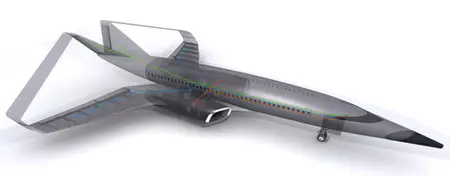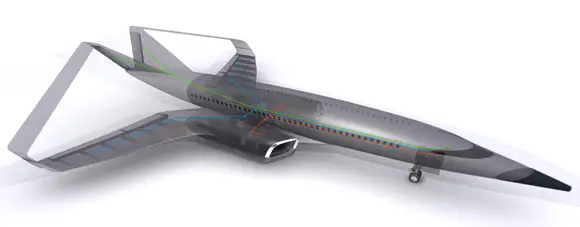LMS Virtual.Lab Rev10 SL3 WIN64 | 4 GB
LMS Virtual.Lab offers an integrated software suite to simulate and optimize the performance of mechanical systems for structural integrity, noise and vibration, system dynamics and durability. LMS Virtual.Lab covers all the process steps and required technologies to perform an end-to-end design assessment in each key discipline. Using LMS Virtual.Lab, engineering teams can build accurate simulation models, simulate their real-life performance, quickly assess multiple design alternatives and optimize designs before prototype construction.
LMS Virtual.Lab Acoustics
FEM acoustics offers a variety of custom-fit solvers and features for guaranteed speed and process efficiency. Them main new item is AML (Automatically Matched Layer). Called the “next generation PML” (Perfectly Matched Layer), AML eliminates the need to model the absorbing PML layer. The solver does it automatically, delivering a simplified FEM mesh close to the radiating system. The FEM elements are purposely kept small so that the meshes are manageable and quickly solved.
Besides AML, other speedy new acoustic features include a MUMPS Solver (Multi-Frontal Massively Parallel Sparse Direct Solver) and VATV (Vibro-Acoustic Transfer Vector), an LMS Patented methodology. New to this release as well is temperature mapping, taking in the effect of temperature on acoustics.
AML (Automatically Matched Layer)
Because the FEM mesh around the system is built very close to the radiating system, the amount of FEM elements can be kept very small, therefore these meshes are very efficient to handle and ultimately solve.
MUMPS (Multifrontal Massively Parallel Sparse Direct Solver) Solver
Significantly faster solution compared to current FEM solvers
Temperature Mapping
For some acoustics applications, the temperature can be an important, critical item. For example, in the case of exhaust systems, temperature can be high and therefore it will influence significantly the acoustics.
VATV (Vibro-Acoustic Transfer Vector)
When dealing with “random” applications such as Turbulent Boundary Layer excitation of an aircraft fuselage or when dealing with wind loads on a window, traditional techniques will take significant time. The new VATV technique (building on our experience of ATV), extends the ATV technique to coupled problems and will as such handle these problems very efficiently.
Duct Modes
Method to gain significant more insight into how noise is propagating inside ducts. With this insight, understanding the countermeasures can be more efficiently designed for
LMS Virtual.Lab Motion
The new Solutions Manager makes it possible to handle large sets of analysis cases, many with automated data management. New as well is the LMS Virtual.Lab Motion-ABAQUS connection for non-linear FE co-simulation. This co-simulation combines the accurate non-linear representation of certain components with the calculation speed of MBS. The continued investment in MBS Solver technology brings yet another significant solver speed improvement in solving realistic models in accelerated timing.
Co-simulation with Abaqus
The 2 solvers (Motion and Abaqus) work in co-simulation. Simulate certain system components with a nonlinear FE package like Abaqus, while the rest of the system is simulated with multi-body technology.
Solutions Manager
Save time in running and managing different cases: simulate as fast as possible different design variants with different parameters, different loading conditions and different boundary conditions.
Motion-TWR
This unique feature allows to simulate an unconstrained vehicle, to correlate multi-body models with test data, to transfer spindle loads from an old vehicle to a new vehicle and to serve as help for testing on physical durability test rigs.
LMS Virtual.Lab Durability
Accurate and fast, LMS Virtual.Lab Durability Thermal Fatigue, provides a unique solution for high temperature cyclic and creep fatigue. Further improvements to Seam Weld modeling enable accurate and fast fatigue life calculations.
High Temperature Fatigue
Possibility to perform simulation of thermal shocks with only simple test data needed
Seam Welds: Stress Approach
Use automated stress based methods for fatigue of seam welds.
LMS Virtual.Lab Noise and Vibration
Structural damping modeling
The structural damping is a key component in reducing noise levels. Very efficiently study the effect of damping on the noise levels.
LMS Virtual.Lab Structures
LMS Virtual.Lab Structures, the integrated solution for structural modeling and analysis, includes unified assembly modeling support for ABAQUS, and further advancing the ability to fully automate the process from CAD to CAE Results, with customer documented gains of 50% or more in time it takes to create and post-process a model.
Unified assembly modeling supported for ABAQUS
Being able to leverage the unified assembly model directly for Abaqus
ANSA
Alignment to ANSA Rev 13 & Semi-automatic mesh correction with ANSA from Virtual.Lab



